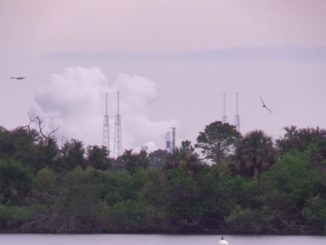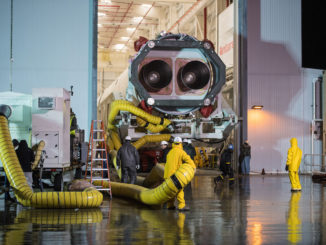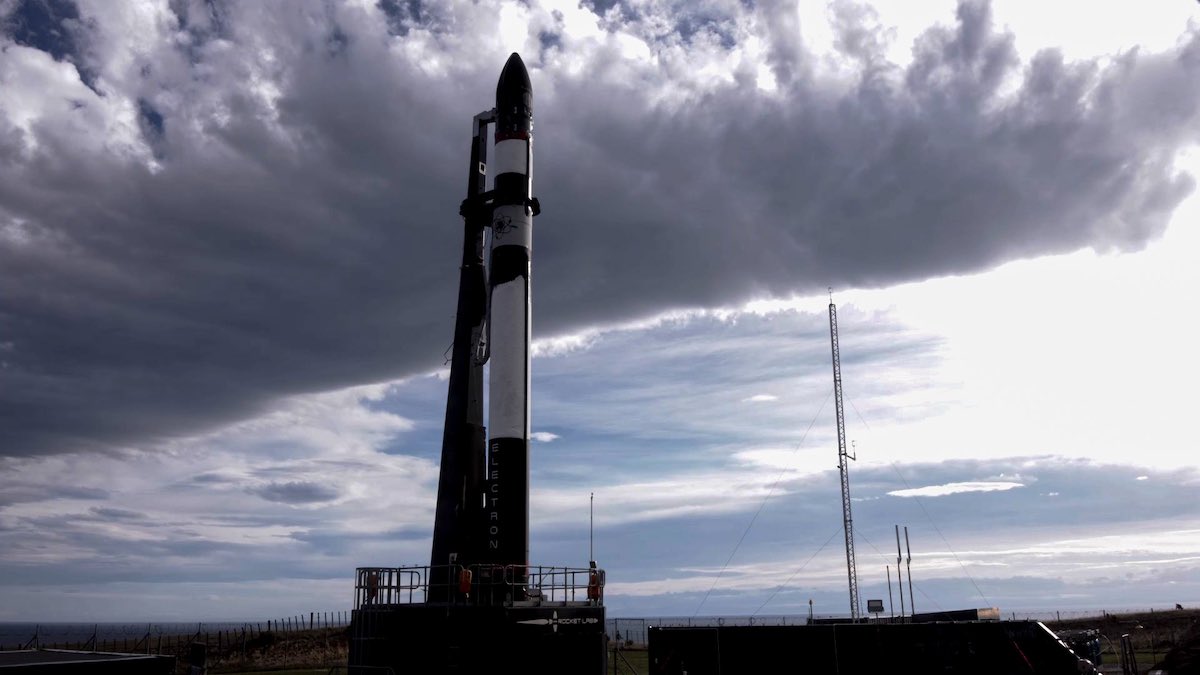
The scheduled launch Saturday of two commercial BlackSky Earth-imaging satellites from New Zealand will double as an opportunity for Rocket Lab to test an enhanced heat shield on its Electron booster, an upgrade that should allow the company to recover rockets in better condition for eventual reuse.
Rocket Lab, based in Long Beach, California, plans to launch its 20th light-class Electron rocket from the company’s privately-owned spaceport in New Zealand during a window opening at 6 a.m. EDT (1000 GMT) Saturday.
Liftoff is set for 10 p.m. local time in New Zealand, and the launch window will run until 8:05 a.m. EDT (1205 GMT; 12:05 a.m. New Zealand time), according to Rocket Lab.
The launch of two BlackSky optical remote sensing satellites will be Rocket Lab’s third mission of the year, and the first since November that will include an attempt to recover the Electron’s first stage booster from the Pacific Ocean downrange from the launch site.
Rocket Lab retrieved an Electron booster intact from the Pacific after a Nov. 20 launch, a major step in the company’s effort to recover and reuse rockets. The company will try to do it again Saturday with a booster featuring an improved heat shield.
While the first stage from the Nov. 20 launch suffered some damage when recovery teams pulled it onto a recovery ship, Rocket Lab said the booster made it back in fairly good shape. The rocket’s condition was good enough to allow engineers to remove elements of the stage’s pressurization system — including helium pressure vessels and valves — and refly them on the first stage on Saturday’s mission.
Peter Beck, Rocket Lab’s founder and CEO, said this week the company was encouraged by the first recovery of an Electron booster last year. Beck announced Rocket Lab’s plans to recover and reuse first stages in 2019, and the company is further along in its rocket reuse initiative than any other launch operator besides SpaceX.
“We are more kind of bullish on this than ever before,” Beck said Tuesday in a press conference. “There is just nothing like getting a rocket back and putting it in the factory. You can instrument a lot, and you can model a lot, but actually putting one back in the factory was just enormous.
“To re-enter that stage, we re-entered on a very aggressive corridor, we had no upgraded heat shield, and we still got it back in remarkable condition,” Beck said. “What was really pleasing to see was the external skin condition.”
Rocket Lab disassembled the recovered booster for detailed materials analyses, and harvested the pressurization system for reuse on Saturday’s flight.

The Electron booster is primarily made of carbon composite materials. Beck said Rocket Lab beefed up the heat shield at the bottom of the first stage, and replaced the aluminum skin under the thermal barrier with stainless steel.
The booster also carries a flight computer, guidance package, a GPS navigation system, and an inertial measurement unit to allow the rocket to fly itself through re-entry, where temperatures can reach more than 4,300 degrees Fahrenheit (2,400 degrees Celsius) at the base of the first stage.
Rocket Lab intends to eventually use a helicopter to snare rocket stages descending under parachutes in mid-air, eliminating contamination from sea water. Beck said Tuesday that Rocket Lab’s next recovery attempt after Saturday is scheduled before the end of the year, when the company will debut a deployable decelerator to help the booster withstand the intense heating of re-entry.
If that goes well, managers could decide to press on with the first try to catch the rocket with a helicopter, a task Beck says is not as difficult as getting the booster back through the atmosphere in the first place.
Designed to haul small satellites into orbit at relatively low cost, the privately-developed Electron rocket has flown 19 times to date. In late 2019 and early 2020, Rocket Lab instrumented Electron boosters to study the heating, aerodynamic, and structural loads they encounter during re-entry.
That set the stage for the first full recovery profile in November, and the second one Saturday.
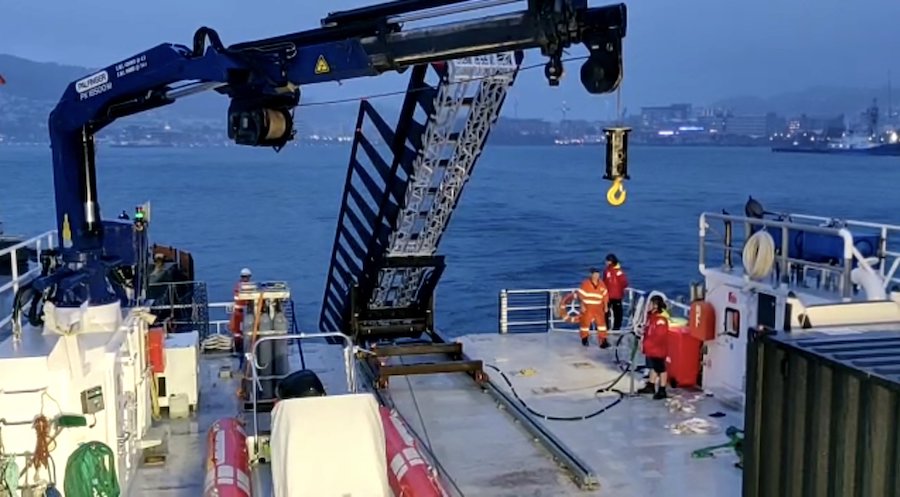
The six-story Electron rocket will take off from Rocket Lab’s Launch Complex 1A on Mahia Peninsula, located on the east coast of New Zealand’s North Island.
After heading southeast from the coast of New Zealand, the Electron rocket will shut down its nine kerosene-fueled Rutherford engines about two-and-a-half minutes into the mission. Moments later, the rocket will separate the first stage, kicking off a series of maneuvers using tiny rocket jets to reorient the booster to a tail-first orientation for re-entry back into the atmosphere at more than eight times the speed of sound.
If the descent goes as planned, the booster will open its drogue parachute about seven-and-a-half minutes after liftoff. That will slow the rocket to subsonic speed. A main parachute will deploy at T+plus 8 minutes, 40 seconds, followed soon after by splashdown.
Stationed on a boat, Rocket Lab’s recovery team will be on standby to fish the rocket out of the sea. For this mission, teams will employ a new strongback structure called the Ocean Recovery Capture Apparatus, or ORCA, to pull the booster out of the water without damaging it.
The ORCA device is being used for the first time Saturday. It’s the outcome from one of the lessons Rocket Lab learned on the November mission.
Beck said Rocket Lab’s experience with recovering and reusing Electron boosters will help designers working on the company’s Neutron rocket, a larger launcher that could begin flying in 2024.
The Electron’s second stage, meanwhile, will continue firing into orbit Saturday with its single Rutherford engine. The Electron second stage will release a kick stage to place the two BlackSky remote sensing satellites into a 267-mile-high (430-kilometer) orbit with an inclination of 50 degrees to the equator.
Separation of the two BlackSky payloads from the kick stage is expected about one hour into the mission.
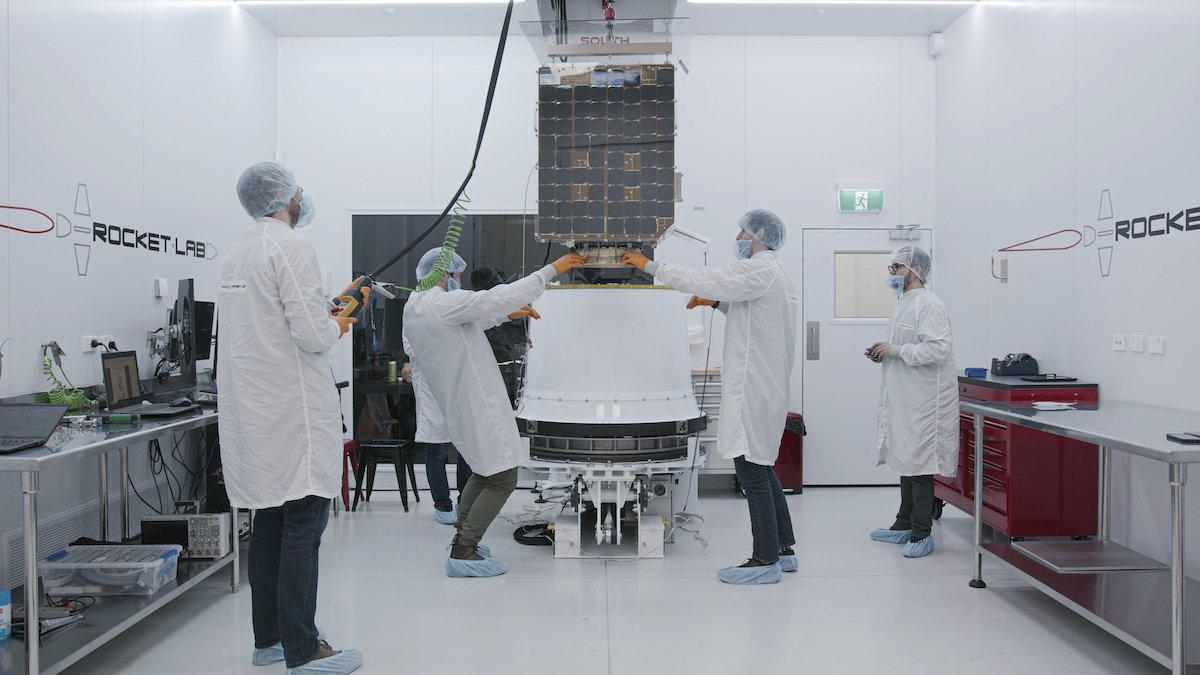
The twin Earth-imaging satellites — each about 121 pounds, or 55 kilograms — will be the eighth and ninth spacecraft to join BlackSky’s Global fleet. The two spacecraft are stacked one on top of the other inside the Electron rocket’s payload fairing, which is outfitted with a new dual payload adapter structure flying for the first time.
Based in Seattle, BlackSky says each of its current generation of spacecraft can capture up to 1,000 color images per day, with a resolution of about 3 feet (1 meter), from orbits around 280 miles (450 kilometers) above Earth. BlackSky is building a constellation of 16 to 24 microsatellites to collect high-resolution imagery for sale to commercial and government customers, including the U.S. military.
The satellites were built in Tukwila, Washington, by LeoStella, a joint venture between BlackSky and the European satellite manufacturer Thales Alenia Space.
“BlackSky is expanding and scaling through a regular cadence of launches so we can consistently increase capacity to deliver first-to-know insights for our customers,” said Brian O’Toole, CEO of BlackSky, in a statement. “Our established practice of rapid deployments and advanced commissioning process ensures customers can trust and rely on our network for access to real-time global intelligence.”
BlackSky has agreements to launch nine high-resolution satellites with Rocket Lab before the end of 2021. The first of the flights occurred in March, delivering a single BlackSky spacecraft to orbit.
Three more dedicated Rocket Lab missions for BlackSky are scheduled later this year, each carrying two satellites. Spaceflight, the Seattle-based rideshare launch company, brokered the launch services agreements between Rocket Lab and BlackSky.
Email the author.
Follow Stephen Clark on Twitter: @StephenClark1.

